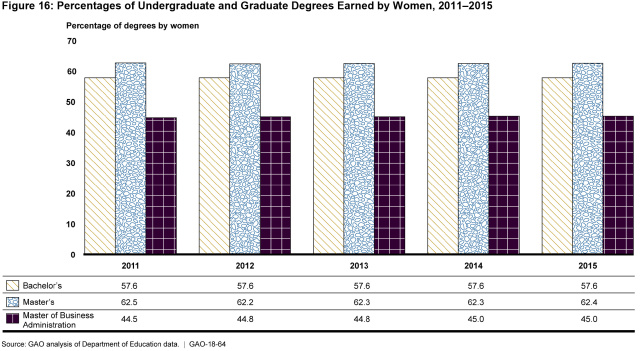What Does It Take to Work on Wall Street?
- recruiting students from a variety of academic disciplines, such as liberal arts or science and technology;
- establishing relationships with student and professional organizations;
- intentionally recruiting diverse candidates; and,
- offering programs to increase awareness of financial services.
 The potential talent pool of minorities increased from 2011 through 2015. For example, of all master’s degrees earned, the proportion awarded to minorities increased from nearly 29% in 2011 to 33% in 2015.
Ongoing Challenges
While some financial firms are implementing targeted practices to increase workforce diversity—and the pool of potential candidates for the industry appears to be strong—the financial services industry continues to face challenges with recruiting and retaining a diverse workforce.
These challenges include:
The potential talent pool of minorities increased from 2011 through 2015. For example, of all master’s degrees earned, the proportion awarded to minorities increased from nearly 29% in 2011 to 33% in 2015.
Ongoing Challenges
While some financial firms are implementing targeted practices to increase workforce diversity—and the pool of potential candidates for the industry appears to be strong—the financial services industry continues to face challenges with recruiting and retaining a diverse workforce.
These challenges include:
- negative perceptions of the financial services industry;
- resistance from firm leadership to recruiting at a broad group of schools; and
- difficulty retaining women and minorities.
- Questions on the content of this post? Contact Daniel Garcia-Diaz at GarciaDiazD@gao.gov.
- Comments on GAO’s WatchBlog? Contact blog@gao.gov.

GAO's mission is to provide Congress with fact-based, nonpartisan information that can help improve federal government performance and ensure accountability for the benefit of the American people. GAO launched its WatchBlog in January, 2014, as part of its continuing effort to reach its audiences—Congress and the American people—where they are currently looking for information.
The blog format allows GAO to provide a little more context about its work than it can offer on its other social media platforms. Posts will tie GAO work to current events and the news; show how GAO’s work is affecting agencies or legislation; highlight reports, testimonies, and issue areas where GAO does work; and provide information about GAO itself, among other things.
Please send any feedback on GAO's WatchBlog to blog@gao.gov.
